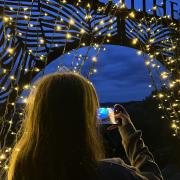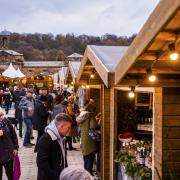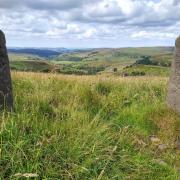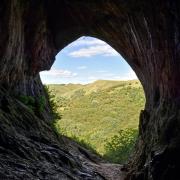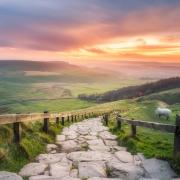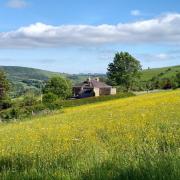Angel, hero, feminist, rebel and, of course, the Lady with the Lamp… just some of the many ways Florence Nightingale has been described over the years. But just who was she?
In August 1856, Florence Nightingale became famous in an instant as she returned home to Derbyshire after nursing soldiers at the Crimean War.
And now, the Florence Nightingale Museum, based in London, has opened Florence Nightingale: A Living Portrait, an immersive new exhibition, which delves deeper than her famous moniker.
The image-led exhibition invites visitors to explore, question and ultimately shape the enduring public image of a pioneering figure in nursing history.
The best part? The exhibition has started its tour in Cromford, a stone’s throw from where Florence Nightingale grew up.
‘We’ve been working with the Trust for quite some time because of the strong connection, with Florence Nightingale having spent so much of her time just down the road at Lea Hurst,’ says Eilis Scott, chief executive at Cromford Mills.

And it is the perception of this world-renowned 19th and early 20th century figure which makes this exhibition so interesting and engaging.
After all, history is rarely black and white. Yes, it can be taught but so often it can boil down to personal interpretation.
‘I think a lot of the imagery around Florence Nightingale is of the ‘Lady with the Lamp’ and her work in Crimea; it’s even included in the GCSE Medicines Through the Ages module,’ Eilis continues.
‘What’s possibly less known is that she used statistics, research and evidence to change the design structure of hospitals and working practices, which I understand are still very much relevant today and she wrote hundreds of letters in the process.
‘Much of what she did comes through her writing and her analysis of statistics. I understand she was a real advocate and lobbyist with medical experts and those in power to really push healthcare forward.
‘So, I think her legacy is probably more wide reaching than the general visitor may realise. You have to remember too the context of the time in which she was writing, which is of course was very different to today. You realise how interesting a character and a person she was.
‘When you go round the exhibition it invites you to think about whether she was a hero, a feminist, a rebel; do we see her as an icon, for example? You’ve got all these different personas with Florence.
‘It’s not just about learning facts, it’s about encouraging you to think. The majority of people have heard of Florence Nightingale, but who was she?’
RECOMMENDED READING
- Florence Nightingale's connections to Derbyshire
- Lea Hurst - The restoration of Florence Nightingale’s Derbyshire home
- Exploring the history of the iconic Derby Cathedral
- Celebrating Derbyshire's inspirational women

The relationship between the Arkwright Society, the custodian of Cromford Mills, and the Florence Nightingale Museum Trust is clearly symbiotic in nature, adding great value both to Derbyshire and the wider interest in this extraordinary woman.
‘We’re very much the host. The design approach and concept is led by the Florence Nightingale Museum Trust,’ she explains.
‘We provide the venue and fully support it beginning here in Cromford, so credit goes to them and Barker Langham, who design the exhibition.
‘Both charities are interested in broadening engagement so for us we hope the exhibition is not just of interest to tourists. We’ve had many visits so far from nurses and people working within the NHS, because Florence Nightingale’s work and ethos is still very much part of nursing today.
‘We’re also hoping to develop even stronger ties with the NHS and the University of Derby, which has a strong nursing component to its learning.’
So other than learning more about Florence Nightingale, what can visitors expect from the exhibition?
‘It’s a relatively small and intimate space, and that’s intentional,’ says Eilis.

‘The exhibition itself is about trying to attract all ages, which is quite a difficult thing to do.
‘We’ve had some very good feedback so far. It’s a good way too of gauging appetite for potentially more exhibitions on Florence Nightingale in the local area in the future.’
Wherever this particular exhibition ends up going throughout the country, there’s no doubt that its opening in Cromford adds something a little bit special.
‘The celebratory aspect for us is the fact she comes from a Derbyshire family and we can shine a spotlight on Derbyshire,’ suggests Eilis enthusiastically.
‘Her approach was very influenced by nature and the natural environment and of course Cromford and Cromford Mills is set within such a beautiful valley. It’s lovely to think her surroundings here influenced her.

‘The development of the technology and the building and approach went from here to Germany, to America, and to hundreds of different mills all over the country. It all started in this very small place. I’m not sure we shout about that enough.’
Florence Nightingale: A Living Portrait adds a temporary new dimension to a site of enormous significance which has experienced significant challenges over the decades.
Cromford Mills is undoubtedly a Derbyshire gem on so many levels. Eilis is positive about the future of the historic site, but stresses that its future prosperity rests on engagement and a lot of hard work.
‘I’ve been here now for two years and I’m incredibly passionate about the site, we have a wonderful team of staff and volunteers,’ she concludes.
‘It remains challenging though. To operate the site costs about £4,500 to keep the doors open a day. The reality is that we still need support to continue to deliver our charitable objects, so we need to increase the income, which we are trying to do through events but also broaden that engagement with the community.
‘Our vision is that we need to progress the next major regeneration. We have a vacant four-storey mill building that we need to secure major funding for to transform it into new uses, because there’s nothing more sustainable than that.
‘There’s something special about Cromford Mills and that something special is the people – the visitors and those who work here. There’s a real sense of community on which to build on.’

Florence Nightingale: A Living Portrait at Cromford Mills runs until November 3 and is open between 10am and 5pm every day.
Tickets are priced £8.50 for adults, with children (aged 12 – 16) £4. Under 12s and Nightingale Nurses (with badge) free.
Joint tickets for the Florence Nightingale Exhibition and Cromford Mills heritage tours are available. For more information, visit: cromfordmills.org.uk





